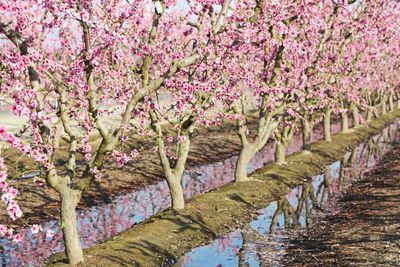Waterlogging Peach Tree Problems
While most crop plants prefer not to have standing water, some can tolerate it better than others. Peach trees are not on that list. They are very sensitive to waterlogging. Standing water around the roots of a tree can cause serious problems. The main issue is that the waterlogging creates an anaerobic environment for the roots. Roots need access to oxygen in the soil to be healthy and to grow. Signs of waterlogged peach trees include color changes in the leaves from healthy green to yellow or even a deep red or purple. The leaves may then begin to shed. Ultimately, the roots will die. When investigated, the dead roots will look black or dark purple on the inside and give off a terrible smell.
How to Avoid Peaches in Standing Water
The key to avoiding peach waterlogging is to prevent overwatering and the collection of standing water. Knowing how much to water a peach tree is a good starting point. About an inch (2.5 cm.) of water during any week without rain should be adequate. It is also important to plant peach trees in areas where the soil will drain well or to amend the soil to drain. Agricultural research has shown that growing peach trees on raised ridges or beds can also keep the soil drier and prevent water from standing around the roots. You can also minimize the risks of waterlogging by selecting certain rootstocks. Peach trees grafted to Prunus japonica, P. salicina, and P. cerasifera have been shown to survive waterlogging better than those on other rootstocks. Being especially sensitive to it, waterlogging is a serious issue with peach trees. Great care should be taken to prevent standing water to avoid lower fruit yields and even the death of your fruit trees.
